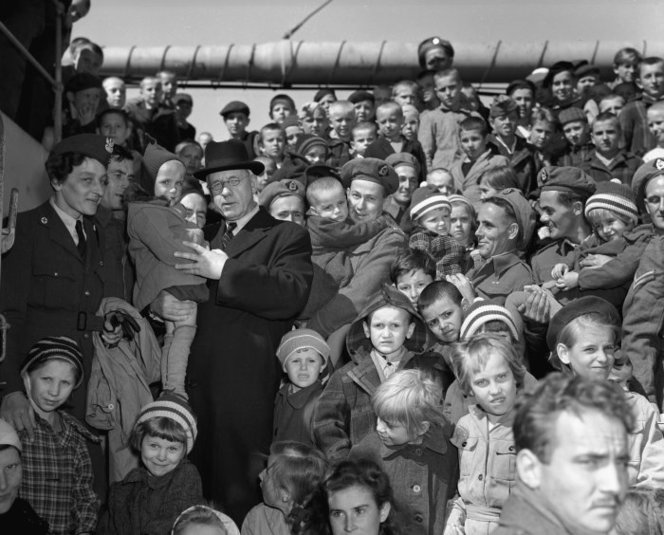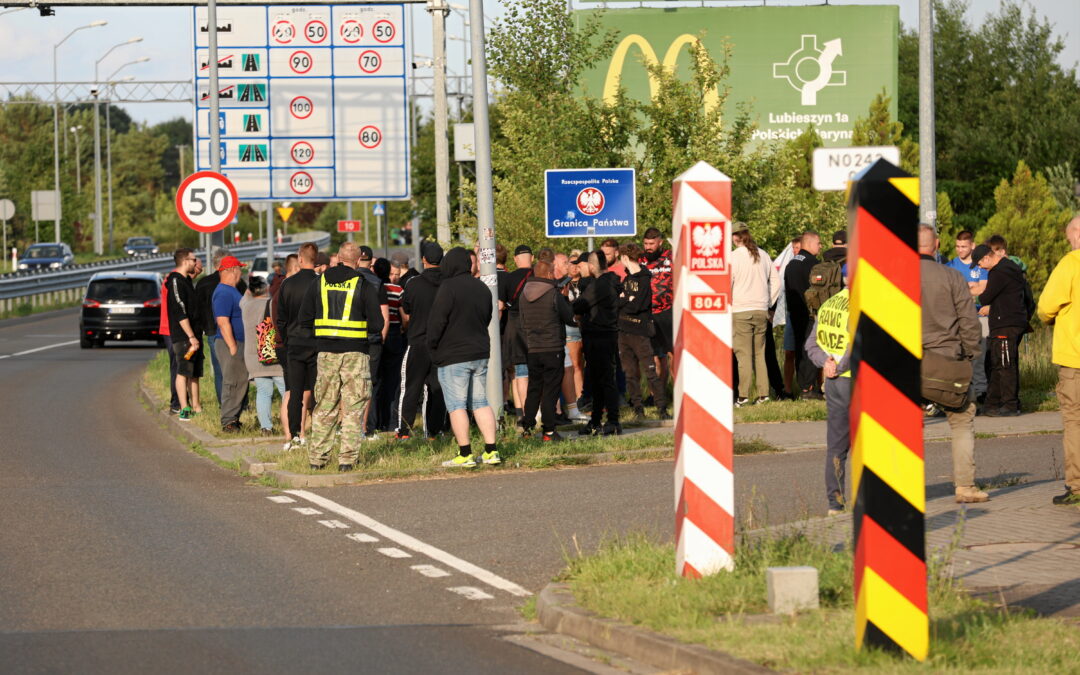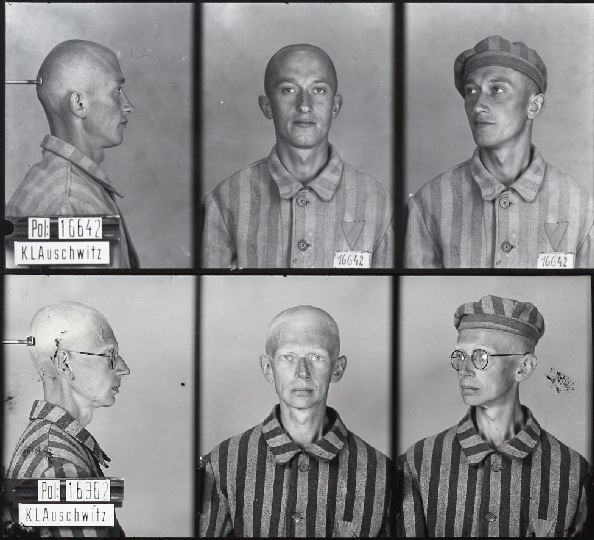By Percy Metcalfe
On Thursday, October 31, a crowd gathered in Warsaw’s Old Town to remember the traumatic birth, 75 years ago, of New Zealand’s Polish community during the Second World War.
A new exhibition, Journey of Hope: the Polish Children from Pahiatua, New Zealand (Podróż Nadziei: Polskie Dzieci z Pahiatua. Nowa Zelandia), was unveiled, telling the story of how a group of 733 Polish children and their 105 adult minders made the five-year forced journey from their homes in eastern Poland, through the Soviet Union and Iran, before finally ending up in the small town of Pahiatua, which would soon come to be known as “Little Poland”.
As the guests assembled in Warsaw, thousands of miles away, in New Zealand, it was already November 1, the 75th anniversary of the date that the USS General Randall pulled into Wellington Harbour with its mixed cargo of men on leave and Polish refugee children. Krystyna Kulak, who was on the ship that day, was in attendance at the event in Warsaw. She recalled how, seeing crowds on the shore cheering the return of troops from Europe, she had wondered whether her fellow lost children, so far from home, would be given a similarly warm welcome.
From Poland to New Zealand (via the Soviet Union and Iran)
After the Soviet invasion of Poland on 17 September 1939, hundreds of thousands of Poles were forcibly relocated from their homes to sparsely populated areas of the Soviet Union: Siberia and the Central Asian republics.
There, the exiles were forced to work in labour camps in bitterly cold conditions, with little shelter or provisions, resulting in numerous deaths. Exact figures are debated, but the exhibition notes that by the end of the Second World War, one million Polish citizens had died and 200,000 remained unaccounted for at the hands of the Soviets.
In 1941, when Hitler commenced his invasion of the Soviet Union, the Polish government-in-exile and the Soviet Union, now united by a common enemy, signed the Sikorski-Mayski Agreement, which allowed for the liberation of the Poles in exile. Around 43,000 of them, including 20,000 children, many of whom had been orphaned, began the long journey southwards to Iran.
By 1943, Poland still remained closed to the exiles, but it was increasingly clear that Iran could not be a permanent place of refuge. An international effort began to relocate the refugees once more, at least until the end of the war, when Poland could theoretically once again be safe and free.
As part of that effort, in June 1943 a ship bound for Mexico carrying a group of Polish refugees stopped over in Wellington. The wife of the Polish consul-general, Countess Maria Wodzicka, visited to check on its forlorn passengers. It was then she, through her friendship with Janet Fraser – wife of Peter Fraser, New Zealand’s wartime prime minister – who created the impetus that eventually brought the children to Pahiatua the following year.
“The wives got talking,” explains New Zealand’s ambassador to Poland, Mary Thurston. Wodzicka and Fraser suggested that New Zealand could assist in the effort to help these refugees. Not long after, the cabinet made the decision to welcome the 733 Poles to New Zealand.
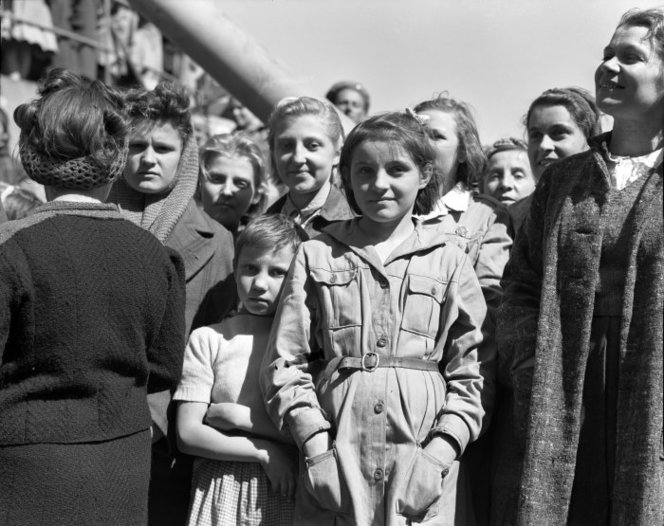
Polish refugees arriving in Wellington on board the General Randall. Ref: 1/2-003624-F. Alexander Turnbull Library, Wellington, New Zealand. /records/22845244
“It was wartime and New Zealanders understood what needed to be done,” says Thurston. “This group of children was something that we could do.” She explained that New Zealanders and Poles in the first half of 1944 “were very very closely involved” as wartime allies: indeed, they fought side-by-side at Monte Cassino and “Peter Fraser had gone to the battlefield, the week after the Poles took the abbey” during that battle.
“Little Poland”
Ryszard Gołębiewski, one of the Pahiatua children who is featured in the exhibition, remembers the last leg of his years-long journey, from the Wellington docks to the camp that would become his home for the next five years. A member of the welcoming crowd pushed a sweet into his hand: “This was my first taste of candy. I could hardly believe that strangers could be so kind. I think this restored my belief in humanity.”
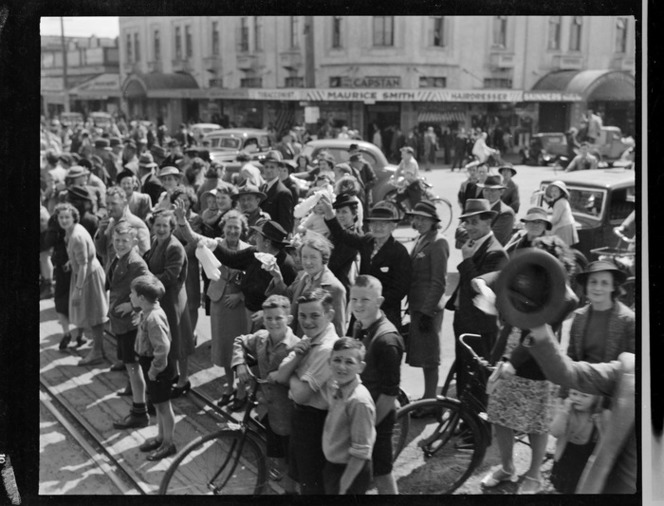
Crowd greeting Polish refugees on their train journey to Pahiatua from Wellington. Ref: 1/2-003644-F. Alexander Turnbull Library, Wellington, New Zealand. /records/32058568
While the war continued, the children’s camp in Pahiatua functioned as a bubble of Polish culture within New Zealand. Schooling was carried out in Polish, and Catholic church services were held in the main hall. The children did, however, learn rugby, and played against local teams who lent them gear.
Integration into New Zealand society became more important after the Yalta Conference. Eastern Poland was annexed by Stalin and the rest of the country was assigned to the Soviet sphere of influence; it was increasingly clear that Poland would not be safe for the returning children.
Peter Fraser’s government gave the 733 children and their caregivers a choice: they could risk returning to Poland, where living conditions were poor and the returnees were regarded with suspicion, or they could stay and receive full New Zealand citizenship. Fraser, Ambassador Thurston suggested, was an innate internationalist; he was “very involved” in the founding of the United Nations, and so understood the international duties of states.
“We had space” for the children after the war, Thurston continues, which made the decision to allow them to stay easier. Almost all the refugees chose to remain in New Zealand. Some were joined by family members after the war ended, and together they formed the core of New Zealand’s Polish community that exists today.
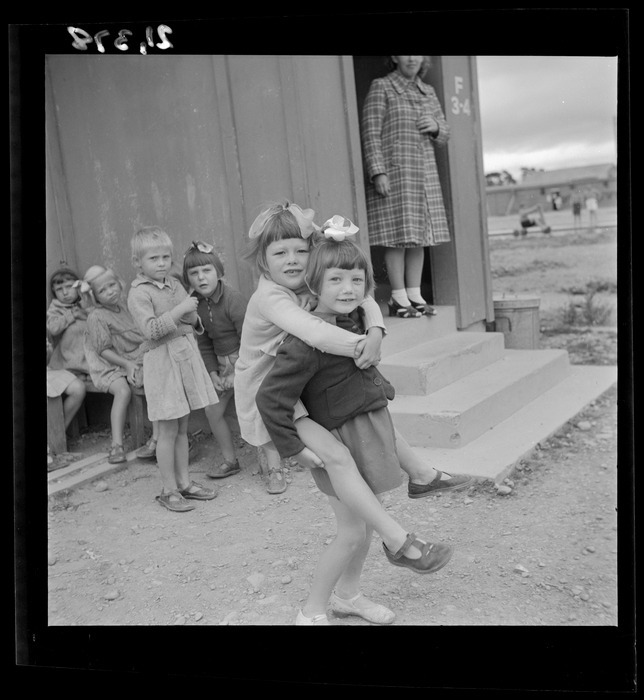
Kindergarten children playing outside their dormitory at a Polish refugee camp, Pahiatua. Ref: 1/4-001378-F. Alexander Turnbull Library, Wellington, New Zealand. /records/32057043
Polish-New Zealand relations
The legacy of the Pahiatua children and this story of friendship in a time of desperation “laid the foundation for the contemporary relationship between New Zealand and Poland today”, says Thurston. It is a source of inspiration for “good and better relations” between Poland and New Zealand, agreed Wojciech Kolarski, undersecretary of state in the chancellery of Poland’s president Andrzej Duda, under whose honorary patronage the exhibition is being held.
The assembled crowd consisted of children and grandchildren of Pahiatua refugees as well as members of Poland’s roughly 100-strong community of New Zealanders. Wendy Jaquiery, who has lived in Poland for over 30 years with her Polish husband, commented that she was attending to “raise a glass of New Zealand wine” in honour of her best friend back home, the child of two Pahiatua refugees.
Aleksandra Kulak, one of the few Pahiatua children who chose to return to Poland, expressed her gratitude to the nation of New Zealand for the wartime hospitality. She explained later that her mother had been unable to join her in New Zealand, so she returned to Europe to rejoin her.
Kulak soon lost touch with her Pahiatua comrades, only to be reunited with many of them and their children decades later, at the 50th anniversary celebrations in Warsaw in 1994.
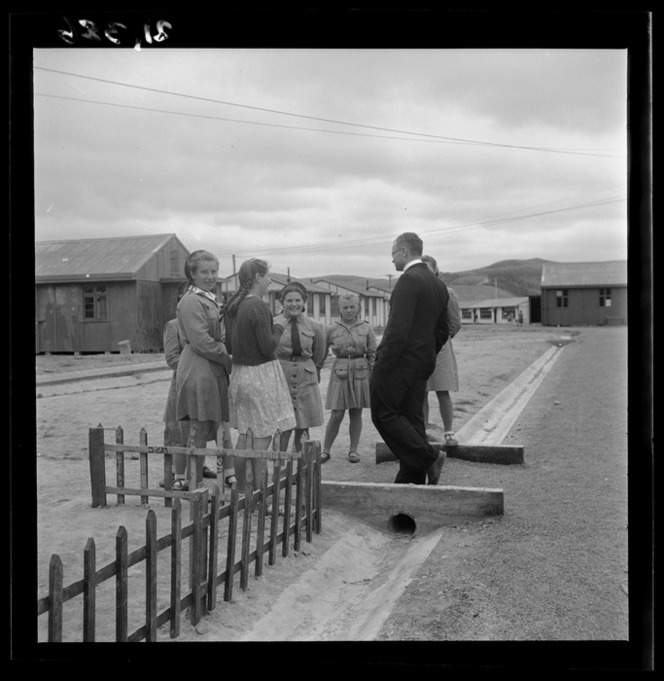
Father Wilniewczyc talks to a group of girls at a Polish refugee camp, Pahiatua. Ref: 1/4-001386-F. Alexander Turnbull Library, Wellington, New Zealand. /records/32057084
The legacy of New Zealand’s first refugees
Although there had been a smattering of people of Polish descent in New Zealand prior to the Second World War, this was the first “mass group”, and indeed New Zealand’s first official refugee group, explains Thurston, adding that Pahiatua happened at a time when “New Zealand’s international personality was still in development”.
In a way, it helped cement the Maori concept of manaakitanga, a sense of respect through hospitality, as an essential plank of New Zealand’s foreign and refugee policy. “Subsequently,” says Thurston, “where there has been a genuine and identified need, New Zealanders have continued to welcome people – Hungarians in the mid-fifties, Vietnamese boat people in the seventies, Syrian refugees as recently as three years ago.”
The exhibition, which tracks the journeys of the refugees from eastern Poland to New Zealand via Siberia and Iran and shows modern Polish culture in New Zealand, is open to visit, free of charge, until November 17 in the space outside Wspólnota Polska at Krakowskie Przedmieście 64 in Warsaw’s Old Town.
Main image credit: Polish refugee children arriving in New Zealand on board the ship General Randall. Ref: 1/2-003634-F. Alexander Turnbull Library, Wellington, New Zealand. /records/23166346

Percy Metcalfe is an American Fulbright student located in Warsaw for the academic year of 2019/20. He is carrying out a research project on the performance of national identity in the Polish-U.S. bilateral relationship at the University of Warsaw while also working part time for Notes from Poland.
